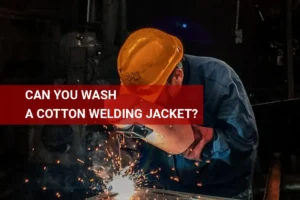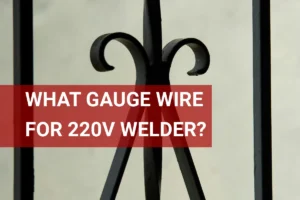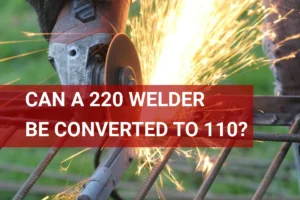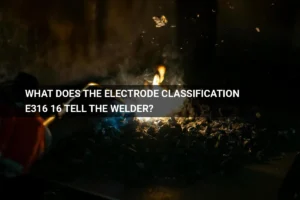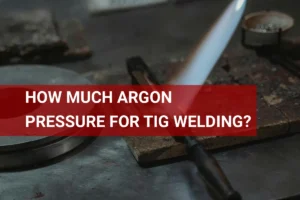What is Argon Used for in Welding? | Applications, Benefits, and Techniques
Published on: June 30, 2025 | Last modified: March 4, 2025
By: Mark Carter
Argon is a colorless, odorless gas that’s part of the noble gases group. It makes up about 0.93% of the Earth’s atmosphere.
I regularly hear the question, what is argon used for in welding? It’s super important because argon helps protect the weld area from contamination. I’ve seen first-hand how cleaner welds lead to stronger joints, reducing the need for repairs later on.
In this article, I’ll cover what argon’s purpose is in welding, how it works, different types of argon, steps for using it, factors that influence its use, common issues, aftercare tips, industry applications, and alternatives to argon. You’ll get a thorough understanding of how to use argon gas welding effectively and the benefits it brings to the process.
Contents
- What is Argon Used for in Welding?
- How Does Argon Work in Welding?
- Types Of Argon in Welding
- Steps for Using Argon in Welding
- Common Issues and Troubleshooting in Argon Use
- Factors Influencing Argon Use in Welding
- Aftercare, Inspection, and Advanced Tips for Argon Welding
- Industry Applications for Argon in Welding
- Alternatives for Achieving Results Similar to Argon in Welding
- Frequently Asked Questions (FAQs)
- Conclusion
- References
What is Argon Used for in Welding?
Argon acts as a shielding gas in welding. It protects the weld area from contaminants like oxygen. Typical uses include TIG welding and MIG welding, where it ensures a cleaner, stronger weld.
How Does Argon Work in Welding?
Argon is an inert gas, meaning it doesn’t react chemically under normal welding conditions. In welding, especially in Gas Tungsten Arc Welding (GTAW), argon provides a protective atmosphere that shields the molten metal from contamination. Without argon, oxidizing elements in the air can damage your weld, leading to weak joints.
Argon gas is essential when you’re welding aluminum or stainless steel. About 99.9% pure argon is typically used. This purity helps maintain weld integrity, producing cleaner, stronger joints. When using argon, you’ll likely see smoother and more consistent results.
Argon really makes a difference. I’ve done countless welds where using argon resulted in excellent finish quality. You won’t regret using argon, especially if you want your welds to meet high standards.
Types Of Argon in Welding
Pure Argon
Pure argon is a colorless, odorless gas essential for welding. It’s primarily used in TIG (Gas Tungsten Arc Welding) to create a clean weld with minimal contamination. Ensure your welder has the correct settings and attach the argon tank safely. Proper flow rate and electrode type are key for optimal results. To further enhance your welding safety and precision, it’s crucial to know how to adjust your welding helmet properly.
Argon-carbon Dioxide Mixtures
This mixture combines argon and carbon dioxide, enhancing penetration for MIG welding. It helps achieve good weld quality for steel and other metals. Adjust your welder’s voltage settings and wire feed speed based on the metal’s thickness for effective use. For those curious about key materials, understanding how much welding rods cost can provide clarity on project expenses.
Argon-oxygen Mixtures
Argon-oxygen mixtures are ideal for specialty welding applications. This blend offers better control over weld pool stability. Adjust the gas ratio based on the specific metal type and desired bead appearance. Selecting the appropriate welding rod is crucial for achieving optimal results in various welding tasks, and you can find more information on what welding rod to use.
Argon-helium Mixtures
Adding helium to argon increases heat, making it suitable for thicker materials. You’ll achieve faster travel speeds and wider welds with this combination. To maximize effectiveness, set your welder for increased amperage and account for the material’s thickness. Understanding the sequence of welding passes is crucial, especially when applying specific techniques such as the hot pass in welding.
Argon-hydrogen Mixtures
Argon-hydrogen mixtures are used for high-temperature applications like stainless steel welding. They enhance arc stability and prevent oxidation, leading to strong welds. Understand your machine’s specifications and control the hydrogen ratio to avoid embrittlement.
That covers the various types of argon used in welding. Let’s now take a look at the steps for using argon in welding.
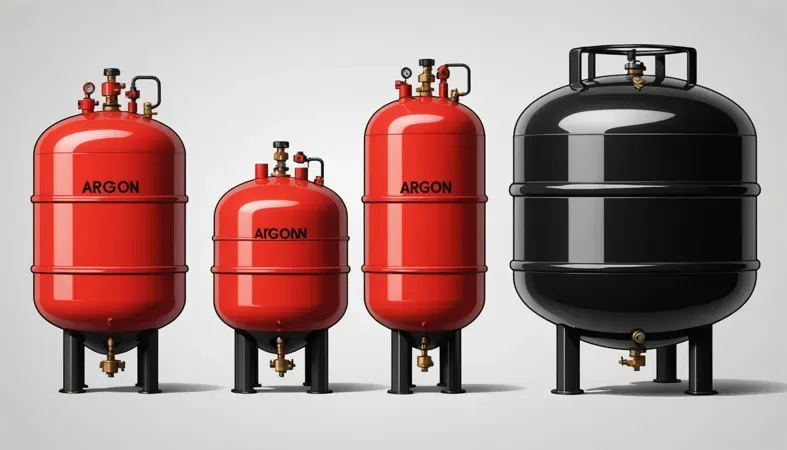
Steps for Using Argon in Welding
Here are steps for effectively using argon in welding.
Configure Your Welding Machine
Start by setting up your welding machine for argon gas. Set the gas flow rate between 15 and 25 cubic feet per hour (CFH) based on the thickness of your metal. For thinner materials, use the lower end, and for thicker metals, increase it. Adjust the voltage and amperage settings based on the workpiece and welding gas details you’ll use.
Knowing how many times you can weld an alloy wheel is crucial for maintaining its integrity and performance, which you can explore more in this detailed guide on alloy wheel welding.
Monitor the gas flow gauge. A consistent flow ensures better shielding gas coverage, preventing contamination. If you notice irregularities, adjust as needed. This results in smoother welds and a cleaner finish!
Choose the Right Gas Mixture
Select the appropriate argon mixture for your specific welding process. For Gas Tungsten Arc Welding (GTAW), pure argon is best, especially with non-ferrous metals like aluminum and magnesium. For MIG welding, a small amount of CO2 improves penetration and puddle stability when working with steel. Seam welding techniques may also benefit from understanding basic principles of seam welding.
Keep in mind that different materials influence your choice. Various alloys may require unique mixtures. Adjusting the mixture significantly affects weld quality, so always consider the specifics. Proper safety measures are crucial because welding can impact ocular health; read more about welding’s effect on eyes.
Set Your Ideal Welding Environment
Control the atmospheric conditions in your workspace. High winds or drafts can disperse argon, leading to weld defects. Work in a more contained space or use barriers to shield your work area from air movement. Although it might feel tedious, controlling your environment is crucial for a successful weld.
Trust me: I once skipped this step and ended up with unwanted porosity in the weld. Now, I always minimize airflow for pristine results. A controlled area makes a significant difference!
Monitor Your Weld Pool
While welding, observe the weld pool and its behavior. Argon provides consistent heat distribution, which is vital for a smooth weld. Maintain a stable arc length and adjust your travel speed accordingly. Slower travel speeds may help with thicker materials, promoting good fusion. When working with different metal finishes, understanding the challenges of zinc-plated steel is crucial for achieving quality results.
Varying the angle of your welding torch can also affect coverage and penetration. Experimenting with different techniques can enhance your weld quality, so don’t hesitate to try new approaches as you work.
Check for Defects Post-weld
After welding, inspect your welds for defects. Look for signs of porosity, cracks, or inconsistent beads. Argon should keep your welds clean, but it’s not foolproof. Contaminants like moisture or oil can cause issues, so examine thoroughly.
In my experience, taking extra time here prevents headaches later. Addressing issues early results in high-quality welding, ensuring your work is both functional and visually appealing.
That covers the process of using argon in welding. Let’s now take a look at common issues and troubleshooting in argon use.
Common Issues and Troubleshooting in Argon Use
Let’s examine specific problems when using argon in welding.
Insufficient Gas Flow
Argon needs a consistent flow of 15 to 20 cubic feet per hour (CFH) for proper shielding. Check the regulator settings to ensure they match this range. If not, readjust the flow rate and monitor it closely.
Contamination Of the Weld
Argon shielding can’t protect against contamination from oils or moisture. Clean your work area and use fresh filler material. I check every surface that contacts my weld to prevent defects.
Inconsistent Arc Stability
Argon must be stable to maintain a smooth arc. If the arc flickers, adjust the settings or inspect your torch components. Regular maintenance is essential.
Improper Deposition Rates
Using argon can lead to varying deposition rates. If your beads appear uneven, consider adjusting your welding speed or the amperage settings.
Poor Gas Coverage
Argon must flow evenly over the weld. Weak coverage causes oxidation. Set your gas cup distance correctly, usually 3/8 inch (1 Cm) above the base material for optimal results.
That covers common problems and solutions when using argon. Let’s now take a look at factors affecting argon use in welding.
Factors Influencing Argon Use in Welding
What factors determine how argon is used in welding processes?
Type Of Material Being Welded
Welding materials like aluminum or stainless steel require different shielding gases. Argon is ideal for both, ensuring a clean weld and preventing oxidation. Use pure argon (99.99%) for aluminum, while a mix of 75% argon and 25% CO2 is effective for stainless steel.
Welding Technique Employed
Techniques like TIG (Gas Tungsten Arc Welding) rely heavily on argon. It creates a stable arc and protects the weld pool, resulting in a neat finish without spatter. Nearly 80% of TIG welding processes use argon as the primary shielding gas for its superior control.
Ambient Conditions
Welding outdoors? Wind can disperse shielding gas, causing porosity in welds. Using pure argon ensures a stable shield even in harsh environments, protecting weld quality and preventing contamination.
Electrode Type
Non-consumable tungsten electrodes require effective shielding. Argon provides that, keeping the tungsten clean and maintaining a consistent arc. Argon shields can achieve over 90% arc stability during the welding process.
Desired Weld Characteristics
If you want strong, visually appealing welds, argon is the best choice. It promotes excellent bead appearance and reduces discoloration often caused by other gases. A flow rate of 15-25 cubic feet per hour (Cfh) is sufficient for thin materials.
That covers the factors that affect argon usage in welding. Let’s now take a look at aftercare, inspection, and advanced tips.
Aftercare, Inspection, and Advanced Tips for Argon Welding
Here are key aftercare practices, inspection points, and expert tips for working with argon in welding.
Aftercare Tips
After using argon, clean your equipment promptly to avoid contamination. Ensure the gas flow lines have a purity of 99.99% O2 or higher; any deviation can affect weld quality. Maintain all couplings and connections, keeping them below 0.5 inches (1.27 Cm) of debris for optimal gas delivery.
Inspection
Inspect your argon regulator for leaks using a soap solution; even minor leaks (Under 5 Psi) can cause pressure loss. For check valves, ensure they function correctly, maintaining at least 30 psi to keep the gas pure. A digital pressure gauge, like the Miller Dual Gauge, accurately monitors your setup.
Expert Tips
If you’re experienced with argon gas in a TIG welder, fine-tune your flow rate. Start around 15 cubic feet per hour (CFH) and adjust based on weld thickness. Experiment with a pulse frequency of at least 2 Hz for better stability in challenging joints. Also, adjust your electrode stick-out to about 3/8 inch (0.95 Cm) for improved arc control. Consider exploring the causes of porosity in welding to further enhance your welding technique and avoid common pitfalls.
Industry Applications for Argon in Welding
I’ve known people to use argon for shielding in welding processes. However, it has many uses, such as:
- TIG Welding: Argon provides an inert atmosphere, preventing contamination. It’s popular for welding stainless steel and titanium.
- Gas Metal Arc Welding (GMAW): Argon enhances arc stability and improves weld quality. It’s commonly used in industrial applications due to its effectiveness.
- Preventing Oxidation: In processes like submerged arc welding, argon keeps the molten metal clean. Industries rely on it for high-quality welds.
- Laser Welding: Argon serves as a backup gas for beam delivery. It’s preferred for precision work in the automotive and aerospace sectors.
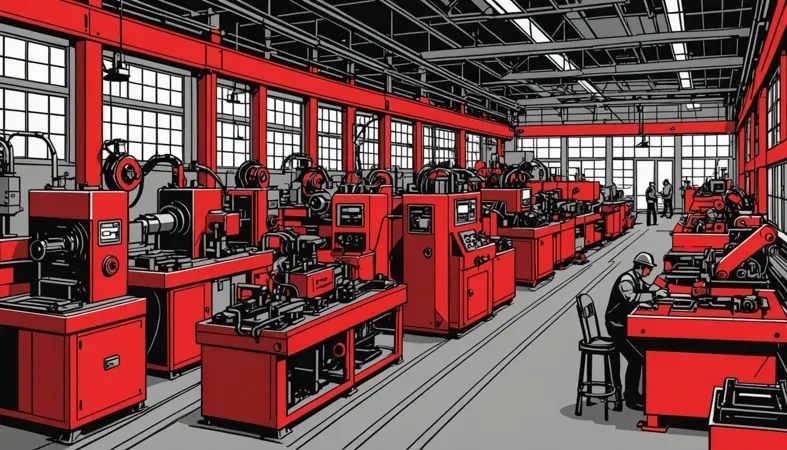
Alternatives for Achieving Results Similar to Argon in Welding
If you want options, there are several alternatives to argon for effective welding. One popular substitute is helium, commonly used in Gas Tungsten Arc Welding (GTAW) for its higher heat input. In my professional journey, I’ve found that a mix of argon and carbon dioxide can also enhance penetration and reduce spatter, especially in MIG welding processes, such as using C25 gas.
Additionally, if you’re welding aluminum, consider pure helium for its excellent performance. For specific situations, like thick materials, using a mixture of argon and hydrogen might do the trick. Each method has its own pros and cons, so explore them based on your project requirements! Welding rods are typically composed of materials suited to specific needs, which can be further understood by exploring what welding rods are made of.
Frequently Asked Questions (FAQs)
Here are some questions I typically get asked regarding argon in welding:
Do You Need Argon to Weld?
Yes, you need argon to weld effectively, especially with TIG (Tungsten Inert Gas) welding. Argon protects the weld from atmospheric contamination, which can lead to defects. Using argon improves weld strength, and a proper shielding gas mix can enhance results by up to 25% compared to no gas.
Is Argon for MIG or TIG?
Argon is primarily used for TIG welding, but it can also be used in MIG (Metal Inert Gas) welding. For TIG, purity is crucial. Generally, 100% argon is optimal for aluminum and stainless steel with TIG, while a mix of argon and carbon dioxide works well for MIG.
What is Argon Best Used for?
Argon is best used for welding non-ferrous metals, particularly aluminum and stainless steel. Its inert properties prevent oxidation during the process. Welding with argon allows for cleaner, stronger welds, increasing the durability of the final product.
Why is Welding Done With Argon?
Welding is done with argon because it’s an inert gas that prevents contamination of the weld pool. This results in fewer defects and improves weld quality. Statistically, using argon can decrease defects by up to 30%, which saves time and money on rework.
What Does Argon Do in Welding?
Argon provides a shielding environment during the welding process. It displaces oxygen and other gases that can create defects. Without argon, a welder risks porosity and weak joints, reducing overall structural integrity of the weld.
Is Pure Argon Better Than Argon Mixes?
Yes, pure argon is better for TIG welding due to its non-reactive nature. It creates a stable arc and cleaner welds. While argon mixes are useful for MIG welding, pure argon gives outstanding performance, especially when working with aluminum and thin materials.
Conclusion
We’ve covered a lot about argon in welding. We discussed its uses, how it works, different types, and steps for using it effectively. We also looked at factors that influence its use, common issues and solutions, and the importance of welding equipment aftercare and inspection.
In simple terms, argon is essential in welding. It acts as a shielding gas to protect welds and enhance quality, mainly in processes like TIG welding. Happy to see you’re ready to apply what you’ve learned about argon and its vital role in achieving stronger, cleaner welds.
For more insights and resources on welding techniques and practices, feel free to visit What is Welding, where you’ll find a wealth of information to further your knowledge.
References
- American Welding Society. (2015). AWS D1.1/D1.1M: Structural Welding Code – Steel. Miami, FL: AWS.
- European Welding Federation (EWF): https://www.ewf.be
- American Welding Society (AWS): https://www.aws.org
Mark is a skilled welding engineer specializing in advanced metal joining technologies and process design. With a formal education in welding engineering and a background rooted in practical experience, Mark bridges the gap between theory and application. He is passionate about making technical concepts accessible, empowering welders to embrace innovation while mastering essential skills. Mark combines his scientific expertise with a commitment to supporting the welding community alongside his uncle, Joe.
American Welding Society, Argon, MIG Welding, Shielding Gas, TIG Welding, Weld Quality, Welding, Welding Applications, Welding Techniques

